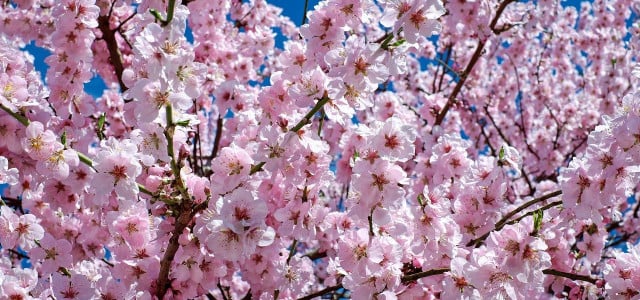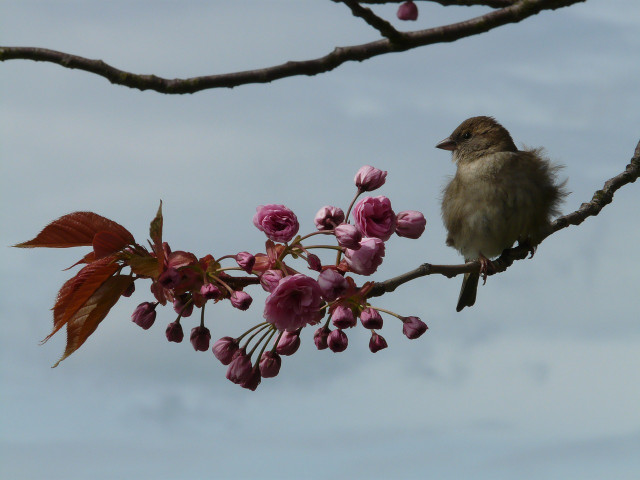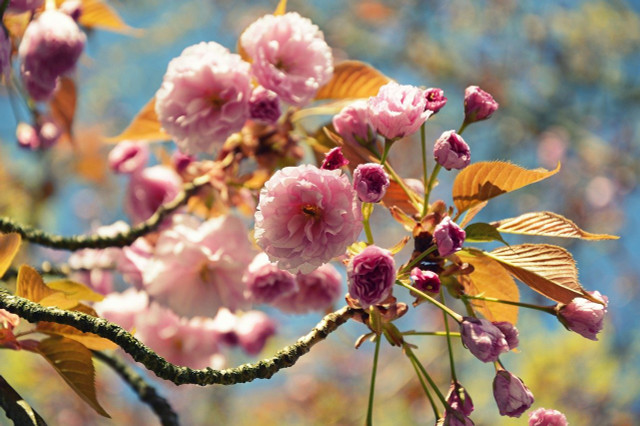
The Japanese clove cherry is just the thing for you if you want a low-maintenance and colorful flowering splendor for your garden. We’ll show you how to grow and care for this ornamental cherry.
The Japanese clove cherry belongs to the rose family and is one of the most popular ornamental cherry species. The deciduous tree is particularly beautiful to look at during the blooming season in May, when the first pink cherry blossoms appear. Originally, the deciduous tree comes from Japan, China and Korea. With a few tips, however, you can easily grow the Japanese clove cherry in your home ornamental or natural garden.
Contents
How to plant the Japanese clove cherry correctly

With its pink flowers, the Japanese clove cherry adds a few beautiful splashes of color to any garden. However, bees don’t find food in the double flowers. You should keep that in mind if you want to create a bee-friendly garden. However, some animals do benefit from the Japanese clove cherry: the blossoms develop into cherries, which are an additional food source for birds in the summer. If you want to grow clove cherry, you should follow these tips:
You can buy Japanese clove cherry in a root ball or in a plant container at garden supply stores. Both are ideally planted in the ground in autumn.
- Location: The Japanese clove cherry does not have high demands on its location. However, the ornamental cherry can grow seven to ten meters high and form a broad crown. You should therefore leave enough distance to other plants. It’s best to find the clove cherry a sunny spot where it stands alone and has plenty of distance from other trees.
- Soil: Since the Japanese clove cherry roots very deeply, the planting soil should already be very loose and well-drained. If your garden soil is slightly sandy and loamy, the ornamental cherry will thrive particularly well. It is best to loosen the soil slightly just before planting and lift some compost under the soil.
Plant the Japanese clove cherry:
- Dip the root ball of the ornamental cherry in a bucket full of water to optimally supply the root with liquid.
- Dig a planting pit about twice as wide and deep as the root ball.
- Mix the planting soil from the pit with some compost.
- Place the plant in the center of the planting hole and backfill the soil.
- Lightly tread or press the soil down and water the ornamental cherry generously.
Japanese clove cherry: the right care

Even if its gorgeous appearance doesn’t suggest it – Japanese clove cherry is a very low-maintenance plant. In the first year after planting, the ornamental cherry needs a little more attention, but older plants are very robust and hardy. To ensure that you get something out of the clove cherry for a long time, you should follow the tips below:
- Watering: Especially freshly planted young plants should be watered regularly. Especially during long periods of heat in summer, the Japanese cherry needs a lot of water. Make sure that the soil never dries out completely and water with low-lime rainwater. You can also mulch the tree. This way, the soil retains the liquid better. However, you should avoid waterlogging at all costs.
- Fertilize: It is not absolutely necessary to fertilize the Japanese carnation cherry. However, if you want to have especially many flowers, you can fertilize the plant occasionally with compost or organic fertilizer from March to April.
- Pruning: In the first few years, it is better not to prune Japanese clove cherry, as it is very sensitive to this. When the ornamental tree has reached its third year, you can thin it out after the flowering period. Cut off especially the older branches and those that are too close to the trunk. It is important that you prune the ornamental cherry only in the summer months. Pruning in the winter can be very damaging to the plant, as it bleeds particularly heavily during this time.
- Wintering: The Japanese carnation cherry is a hardy plant. Therefore, you don’t need to give it extra protection in winter.
- Diseases and pests: If you take good care of the clove cherry, it is usually a very robust ornamental plant that is rarely attacked by pests. In exceptional cases, only the frost moth and the shotgun disease can be dangerous to it. The best way to control the fungus that causes shotgun blight is to remove the affected leaves and spray the ornamental cherry with a broth of field horsetail. To get rid of the frost moth, attach glue traps to the tree trunk and collect the individual animals from the leaves.


